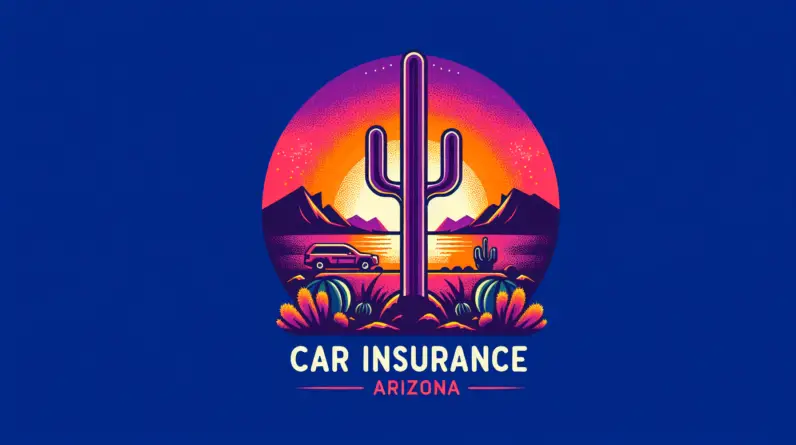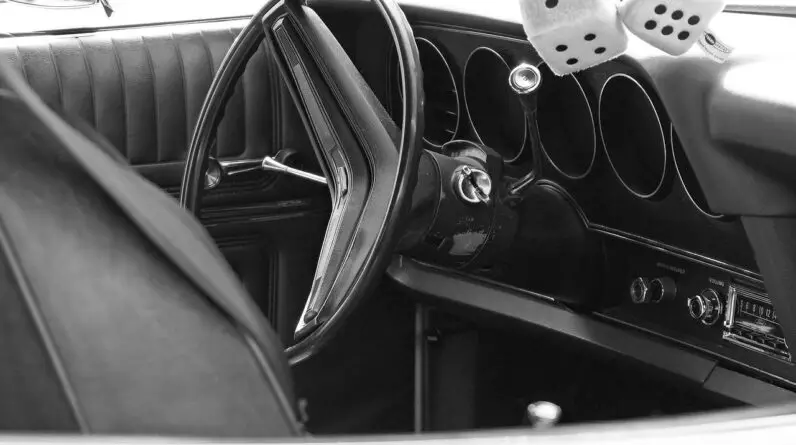
Imagine this scenario: You wake up one morning to find that your car has been stolen. As the shock and frustration sink in, you realize that not only have you lost your beloved vehicle, but you will also have to navigate the complex world of insurance premiums. But what exactly is the impact of car theft on insurance rates? In this article, we will explore the various factors that come into play when it comes to car theft and how it can affect your insurance premiums. Whether you have been a victim of car theft or simply curious about the topic, read on to gain a better understanding of this often overlooked aspect of insurance.
Introduction
Car theft is a concern for many vehicle owners. Besides the distress of losing your car, there are also financial implications to consider, particularly when it comes to insurance premiums. Understanding the relationship between car theft and insurance can help you make informed decisions about protecting your vehicle and managing your insurance costs. In this article, we will explore the various aspects of car theft and its impact on insurance premiums, as well as the measures taken by insurance companies to mitigate the risks associated with car theft.

Overview of Car Theft and Insurance
Definition of car theft
Car theft, also known as grand theft auto (GTA), refers to the act of intentionally taking someone else’s vehicle without their consent or authorization. This criminal act involves various means and techniques, such as hot-wiring, lock picking, and sophisticated electronic systems hacking. Car thieves target vehicles for various reasons, including resale, joyriding, and the illegal parts market.
Types of car theft
Car theft can occur in different ways and settings. Some common types of car theft include:
- Opportunistic theft: This type of theft happens when a thief takes advantage of a vehicle left unattended with keys in the ignition or unlocked.
- Professional theft: Organized criminal groups are involved in professional car theft. They tend to target higher-value vehicles for resale or export.
- Carjacking: Carjacking refers to the act of forcefully taking a vehicle from its owner or occupant with the use of violence, threats, or coercion.
Insurance coverage for car theft
Insurance coverage for car theft typically falls under the comprehensive coverage portion of auto insurance policies. Comprehensive coverage is optional but provides protection against non-collision incidents, including theft, vandalism, natural disasters, and other unpredictable events. It reimburses the policyholder for the value of the stolen vehicle, up to the policy limits, minus any applicable deductible.
Factors Affecting Insurance Premiums
Risk assessment by insurance companies
Insurance companies assess various factors when determining the premiums for car insurance policies. Car theft is one of the factors considered in risk assessment. If you live in an area with high car theft rates, insurance companies may view your vehicle as a greater risk and charge higher premiums to compensate for the increased likelihood of theft.
Car theft statistics
Insurance companies analyze car theft statistics to evaluate the risk associated with insuring vehicles in different regions. They consider the overall car theft rates, trends, and patterns in specific areas to make informed decisions about policy pricing. Higher car theft rates in a particular region may result in higher insurance premiums for policyholders located there.
Regional variations in car theft rates
Car theft rates can vary significantly from one region to another. Urban areas with higher population densities often experience greater car theft rates compared to suburban or rural areas. Factors such as socio-economic conditions, crime rates, and law enforcement initiatives influence the prevalence of car theft in different regions. Insurance companies consider these regional variations when assessing the risk profile of policyholders and determining insurance premiums.
Insurance Premiums and Car Theft
Car theft has a direct impact on insurance premiums. Insurance companies consider the prevalence of car theft in your area when calculating the risk associated with insuring your vehicle. Higher car theft rates in your region will likely result in higher premiums to account for the increased risk of theft.
If you live in an area with high car theft rates, insurance companies may charge higher premiums to cover the additional risk. These high-risk areas are typically characterized by higher crime rates and a history of car theft incidents. Insurance companies factor in this increased risk when setting premiums, ensuring they can cover potential losses resulting from stolen vehicles.
Insurance discounts for theft prevention measures
Insurance companies encourage policyholders to take proactive measures to prevent car theft. By installing anti-theft devices, choosing secure parking locations, or using immobilizers and GPS tracking systems, you can qualify for insurance discounts. These theft prevention measures reduce the risk of your vehicle being stolen, providing reassurance to insurance companies and resulting in potential premium savings for you.
Car Theft Prevention Measures
Installing anti-theft devices
Installing anti-theft devices is an effective way to deter car thieves and reduce the risk of theft. These devices include car alarms, steering wheel locks, and electronic immobilizers that prevent the engine from starting without the correct key or code. By equipping your vehicle with these devices, you increase its security and make it less attractive to potential thieves.
Choosing secure parking locations
Parking your vehicle in well-lit, secured areas can significantly reduce the risk of car theft. Opting for parking lots with surveillance cameras, security guards, or controlled access minimizes the opportunities for thieves to target your vehicle. Additionally, parking in garages or gated communities provides added protection against unauthorized access.
Using immobilizers and GPS tracking
Immobilizers are electronic devices that prevent the engine from starting without the correct key or code. They add an extra layer of security to your vehicle, making it more challenging for thieves to steal. Additionally, GPS tracking systems can help locate and recover stolen vehicles quickly. Using these technologies can improve the chances of recovering your vehicle and may also lead to insurance discounts.
The Relationship between Car Value and Premiums
The value of your car directly affects your insurance premiums. Higher-value vehicles typically require more expensive repairs or replacements, making them more expensive to insure. Therefore, insurance companies may charge higher premiums for vehicles with higher values, as the potential costs associated with theft or damage would be greater.
The role of car theft in determining car value
Car theft plays a role in determining the value of a vehicle. If a specific make and model are frequently targeted by thieves, insurance companies may consider these vehicles to be at higher risk and adjust their valuation accordingly. This adjustment in car value may result in higher insurance premiums for owners of those vehicles, reflecting the increased likelihood of theft.
Claims Process for Car Theft
Steps to follow after car theft
If your vehicle is stolen, it is crucial to take immediate action. Follow these steps after realizing your car has been stolen:
- Contact the police: Report the theft to the police as soon as possible. Provide them with all the necessary details, including the make, model, license plate number, and any identifiable features of your vehicle.
- Notify your insurance company: Inform your insurance provider about the theft. They will guide you through the claims process and provide the necessary forms and information required to file your claim.
- Provide supporting documentation: To support your claim, provide any evidence or documents requested by your insurance company. This may include the police report, photos of your vehicle, and any other relevant information.
Filing a police report and insurance claim
Filing a police report is crucial for documenting the theft and providing evidence to your insurance company. The police report contains important details about the incident, which will assist law enforcement in their investigation. Your insurance company will require a copy of the police report when processing your claim. Be sure to provide them with all the necessary information, including the date, time, and location of the theft.
After filing the police report, contact your insurance company to initiate the claims process. They will guide you through the necessary steps, including filling out claim forms, providing supporting documentation, and answering any questions or concerns you may have. It is important to cooperate fully with your insurance company and provide all the requested information promptly.
Reimbursement and compensation for stolen vehicles
If your stolen vehicle cannot be recovered, insurance companies typically reimburse policyholders for the actual cash value (ACV) of the vehicle minus the deductible. The ACV is determined based on factors such as the year, make, model, mileage, condition, and market value of similar vehicles. The insurance company will consider these factors to determine the amount to be reimbursed.
It is important to note that insurance policies can have limitations on coverage for personal items left in the stolen vehicle. Review your policy to understand the extent of coverage for personal belongings. Consider checking with your insurance company if you have any valuable items that were stolen to explore possible options for compensation.
Effects of Car Theft on Individual Premiums
Experiencing car theft can have a lasting impact on your insurance premiums. If your vehicle is stolen, and you file a claim, your insurance company may consider you a higher-risk policyholder. As a result, your premiums may increase when it comes time to renew your policy. This increase reflects the higher likelihood of theft recurrence and the associated costs for the insurance company.
Loss of no-claims bonus
Car theft can also result in the loss of your no-claims bonus, depending on your insurance policy. A no-claims bonus is a discount given by insurance companies to policyholders who do not make claims during a specified period. If you make a claim due to car theft, some insurance providers may reset your no-claims discount, leading to higher premiums for subsequent years.
Financial impact of multiple theft claims
Multiple car theft claims can significantly impact your insurance premiums and insurability. Insurance companies view policyholders who have multiple theft claims as higher risks, as their vehicles are repeatedly targeted by thieves. As a result, they may charge considerably higher premiums or even refuse to provide coverage. It is essential to take preventative measures and minimize the risk of recurrent car theft to maintain favorable insurance rates.
Measures Taken by Insurance Companies
Fraud prevention initiatives
Insurance companies actively work to prevent fraud related to car theft claims. They employ various anti-fraud measures, including rigorous claim assessments, investigation of suspicious claims, and collaboration with law enforcement agencies. These initiatives help protect honest policyholders and deter fraudulent activities in the insurance industry.
Collaboration with law enforcement agencies
Insurance companies collaborate closely with law enforcement agencies to combat car theft and recover stolen vehicles. They share information, coordinate investigations, and provide support to aid in vehicle recoveries. This collaboration contributes to the overall efforts in reducing car theft rates and improving the effectiveness of insurance fraud detection and prevention.
Offering coverage for stolen personal belongings
In addition to vehicle coverage, some insurance companies also offer coverage for personal belongings stolen from within the vehicle. This coverage may include items such as laptops, smartphones, or other valuables. Understanding the extent of coverage for personal belongings and considering this aspect when selecting your insurance policy can provide additional financial protection in the event of car theft.
Conclusion
Car theft can have a significant impact on insurance premiums, with higher rates often associated with regions experiencing higher theft rates. By implementing car theft prevention measures, such as installing anti-theft devices and parking in secure locations, you can reduce the risk of theft and potentially lower your insurance premiums. In the unfortunate event of car theft, promptly reporting the incident and cooperating with your insurance company during the claims process is crucial. Understanding the effects of car theft on individual premiums and the measures taken by insurance companies can help you navigate the insurance landscape and make informed decisions to protect your vehicle and manage your insurance costs effectively.






